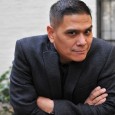What is UNAIDS? Why focus on global HIV responses when we have so much work to do in the US?
I am just coming back from the 45th Program Coordinating Board (PCB) meeting of UNAIDS, the United Nations Joint Programme on HIV/AIDS. As the Vice-Chair of the US People living with HIV Caucus (HIV Caucus), I serve as representative of North America Civil Society with my colleague Wangari Tharao of Women’s Health in Women’s Hands in Toronto, Canada.
The Joint Programme started in 1994 as a recognition that HIV was a global epidemic, that many country responses were insufficient, and that multiple UN agencies were focusing on HIV as the epidemic heavily impacted medical care, family life, education, development, migration, labor and human rights. Since its inception, UNAIDS has brought a focus to human-rights centered approaches to the HIV response. UNAIDS has done this through research, reports, advocacy, direct funding, and diplomacy. As part of the Non-Governmental Organization (NGO) Delegation to the UNAIDS PCB, I work with nine other Civil Society representatives from five different regions to make sure that the needs and voices of key populations (like people living with HIV, sex workers, people who use drugs and LGBTI people) and other vulnerable groups (women and young people), and Civil Society remain central to the global HIV response.
HIV in 2019 is a different world than it was in 1994. With the advent of effective HIV treatment, most countries have focused on clinic-based solutions in their HIV response. In some of these places, HIV clinic services have deep reach and people living with HIV have high access and treatment adherence rates. In others, the story is not so clear.
Last year, over half of all HIV diagnoses globally was among key populations: gay and bisexual men and other men who have sex with men, people of trans experience, sex workers, people who use drugs and people in prison settings. In the US, we are used to these numbers (in fact, key populations have represented the majority of the HIV epidemic domestically since the beginning). But even those countries with generalized epidemics (where heterosexual people comprise the primary group of people living with HIV), key populations are steadily becoming a larger part of the epidemic. Clinic-based settings do not reach key populations for a variety of reasons – but stigma and discrimination, as well as structural barriers, are high on the list.
At UNAIDS, we who represent Civil Society still bring up difficult issues. At the most recent meeting, GNP+ led an intervention criticizing how children and adolescents living with HIV are being left behind with inadequate healthcare, treatment options and supportive services. 300 young people living with HIV die everyday in the world – as my colleague Jonathan Gunthorp of SRHR Trust in South Africa compares it to “a plane full of kids dropping out of the sky daily” – with very little advocacy to fix it. We stood with signs that said “wake up, children are dying. Pediatric HIV is a deadly crisis. We demand action.” People took pictures at this disruption of the meeting’s norms.
Every meeting feels a bit like political theater. Member States read prepared statements to get into record all the good happening in-country on HIV. Some take the opportunity to criticize other regions. As NGO Delegates, we take our space to remind people about what matters: people living with HIV and other key populations, women and young people, and the laws and frameworks that marginalize us or make us more vulnerable to have poor health outcomes.
Does UNAIDS matter? Considering the rise of nationalist populism domestically and globally, what role do multilateral organizations like the United Nations have?
Multilateral organizations like the United Nations offer a global set of rules about human rights, health and education. For many of us in the US, we do not consider the importance of these international rules. But for gay men, people of trans experience, sex workers, people who use drugs, people living with HIV and others who are socially marginalized, these multilaterals might be the only recourse to justice when we are often criminalized in our home countries.
How does my advocacy change at UNAIDS?
People think the HIV epidemic in the US is sorted. They don’t see the very real differences in the HIV epidemic in the US for people of color, immigrants, people of trans experience, people who use drugs, sex workers, poor people and people with mental health challenges. Part of my role is to bring forward the challenges we have in accessing healthcare, dealing with stigma and discrimination, and the disparities of our epidemic across our differences.
Part of my role is understanding the US role as both a major funder in global HIV responses, as well as the challenges with our policies (such as the Global Gag Rule or with limiting work with sex workers or fighting countries to protect pharmaceutical wealth). As someone who pays taxes in the US, I do think we have to hold our government responsible for everything they do here and abroad. And this is part of my role at UNAIDS.
When I look at the global HIV epidemic, it becomes more obvious that we will not treat our way out of this epidemic. UNAIDS provides a vision where human rights are an integral way to move forward. With a new Executive Director and a renewed commitment by some countries, we have to keep that human rights lens central.








Comments
Comments